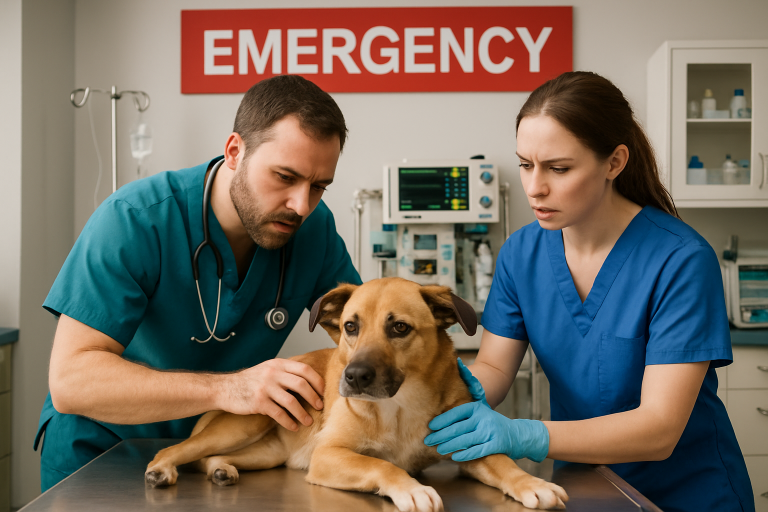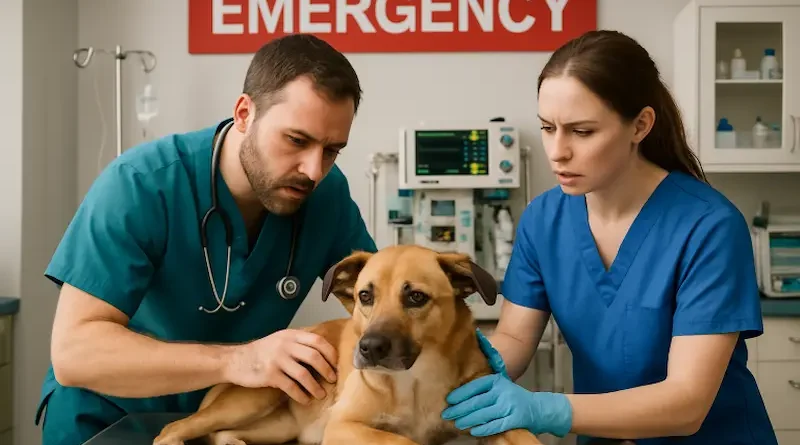How Emergency Vets Stabilize Pets in Critical Condition
When you’re faced with a pet emergency, every second counts. Immediate stabilization is essential for ensuring the best chance of survival and recovery for your animal companion. Whether it’s trauma, poisoning, or a sudden illness, emergency veterinarians are trained to rapidly assess and support pets in crisis. Many pet owners in urgent situations are left searching for an emergency vet near me to get their pets the help they need as quickly as possible. Modern emergency clinics combine advanced medical expertise with compassion, prioritizing your pet’s safety and comfort during their most vulnerable moments. As veterinary medicine evolves, clinics now use a blend of rapid-response protocols and cutting-edge technology to address life-threatening scenarios. The emergency team’s goal is not just to save lives in the immediate sense, but also to set pets on the path to long-term recovery. For families, understanding the steps taken by vets can ease fear and uncertainty, allowing them to participate fully in crucial decisions about their pet’s care. Quick action, combined with informed choices, can make all the difference.
Initial Triage and Assessment
From the moment a pet arrives at an emergency veterinary clinic, the focus is on swift and effective triage. Trained professionals immediately evaluate vital signs such as heart rate, respiratory rate, and temperature, as well as the level of consciousness. This process allows the team to distinguish between pets who are stable and those facing acute threats to their life. Quick decisions are often required—control of external bleeding, airway management, and basic life support may begin within seconds of arrival. Effective triage also means constant communication among veterinary staff, ensuring that no time is wasted. Immediate interventions—such as oxygen therapy, intravenous fluids, or pain relief—are administered as needed to stabilize the patient. This initial response sets the stage for further evaluation and tailored treatment, making it a cornerstone of emergency veterinary care.

Advanced Diagnostic Imaging
Once the pet’s immediate needs are addressed, the next step is often advanced diagnostic imaging to uncover internal injuries or illnesses not visible during the initial exam. X-rays help quickly diagnose fractures, foreign bodies, or chest and abdominal abnormalities. Ultrasound technology is used to evaluate soft tissue organs for signs of bleeding, tumors, or blockages. When situations are particularly complex, CT scans or MRIs are ordered for detailed, cross-sectional views and neurological assessments. These tools bridge the gap between symptoms and diagnosis, guiding the most effective course of action and reducing the risk of complications. As discussed by PetMD, these imaging modalities are now pillars of modern emergency veterinary hospitals.
Critical Care Units
For pets requiring ongoing intensive monitoring and intervention, critical care units (CCUs) offer a highly specialized environment. Staffed by veterinary technicians and doctors with advanced training, these units are equipped to handle everything from severe trauma to acute organ failure. Features often include continuous electronic monitoring, 24/7 observation, intravenous medication delivery, oxygen cages, and advanced nutritional support. The low patient-to-staff ratio ensures close attention to changes in a pet’s condition, helping the care team to react swiftly as needs fluctuate throughout recovery.
Additionally, many CCUs work closely with reference laboratories to run rapid bloodwork and other diagnostics, optimizing care decisions in real time. The presence of a dedicated CCU within a veterinary hospital can be lifesaving for the most critical patients and offers peace of mind to owners during uncertain times.
Surgical Interventions
Some emergencies, such as severe trauma, internal bleeding, or gastrointestinal blockages, require immediate surgery to save a pet’s life. Emergency veterinarians are skilled in performing time-sensitive procedures ranging from wound repair and fracture stabilization to complex abdominal or thoracic surgeries. Before any procedure, the team quickly evaluates the risks and develops anesthesia and pain management protocols tailored for compromised patients—helping minimize surgical complications and improve outcomes. Not all clinics are equipped for every type of emergency surgery; in those cases, patients are stabilized for rapid referral to specialty centers with 24-hour surgical teams.
Pain Management Strategies
Controlling pain is essential in emergency situations—not only to ensure comfort but also to support healing. Emergency veterinarians select from an array of pain relief options, including injectable or oral medications, local anesthetics, and in some cases, advanced technologies like nerve blocks or laser therapy. Carefully monitored pain management decreases stress, allowing pets the best chance at a calm recovery and reducing the metabolic toll of trauma or illness on their bodies. This comprehensive approach recognizes pain as a multidimensional experience and addresses it with expertise and empathy.
Collaboration with Specialists
Complex emergency cases often call for expertise from board-certified veterinary specialists. Emergency vets collaborate closely with internal medicine doctors, cardiologists, neurologists, surgeons, and others to coordinate advanced diagnostics and treatment plans. Large specialty hospitals typically house multiple services under one roof, allowing seamless consultation. Even in smaller emergency clinics, strong referral relationships help ensure that each patient receives precisely the level of care necessary for their specific condition. This collaborative approach can make all the difference in cases where multiple organ systems or complicated injuries are involved.
Importance of Owner Communication
Transparent, timely communication with pet owners is a defining quality of excellent emergency veterinary care. From the first moments of intake through each phase of treatment, veterinarians update families, explain findings, review options, and provide emotional support. Written estimates, consent forms, and clear aftercare instructions help eliminate confusion during a stressful experience. By keeping owners informed and involved, emergency clinics foster trust and empower guardians to make the best choices for their beloved pets’ health.
Conclusion
Emergency veterinarians are committed to stabilizing and healing pets when they need it most. Through rapid assessment, advanced diagnostics, attentive critical care, surgical expertise, and comprehensive pain management, these teams drive positive outcomes in the face of crisis. Their collaborative model and dedication to open communication further elevate the quality of care. For pet owners, understanding these procedures can provide reassurance and make difficult moments feel more manageable, knowing that highly skilled professionals are advocating for their companions every step of the way.

